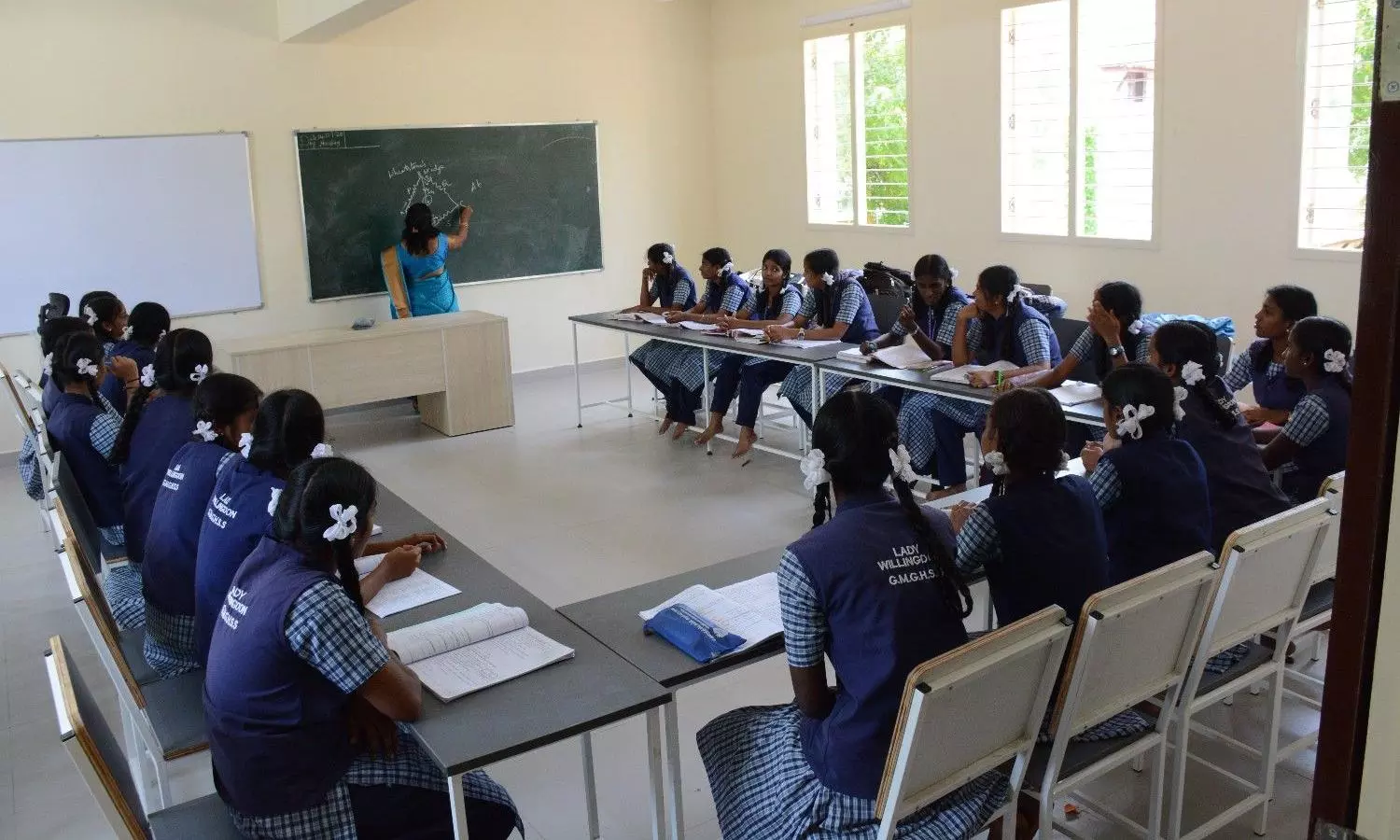
Health concerns, space crunch challenge TN's ப-shaped classroom initiative
BJP calls it unscientific, doctors say it may give students eye, neck pain during longer classes, teachers say the model works only with smaller pupil strength

The Tamil Nadu government’s decision to introduce a new seating arrangement shaped like the Tamil letter ப (pa), or the English letter U, in government schools on a pilot basis has come under heavy fire from paediatricians, orthopaedicians and Opposition parties.
The layout, piloted in some schools on Monday (July 14), is being criticised for lacking proper groundwork before implementation, being unscientific, and having the potential to pose health risks for children.
Copy of Kerala model: BJP
The Tamil Nadu unit of the BJP accused the DMK government of blindly imitating the Kerala model without proper planning. BJP spokesperson SG Suryah said the seating arrangement was put on pilot mode after the intervention of the BJP.
He criticised Tamil Nadu School Education Minister Anbil Mahesh for taking hasty decisions without consulting teachers and students.
Also read: Kerala officially brings robotics into mainstream school syllabus
“We strongly protested this unscientific, cinematic initiative by the DMK government. This is a classic case of Tamil Nadu being a copycat. The Kerala government introduced a similar idea inspired by a Malayalam movie, Sthanarthi Sreekuttan, and now Tamil Nadu has followed suit without assessing our classroom structures or talking to stakeholders. When we raised severe objections, they changed the implementation announcement to just a pilot,” said Suryah.
School Education Department officials told the media that the pilot model would be tried out in a few classes in all districts for a week. Based on results from the pilot study, a final decision to change the seating arrangement would be made after a series of consultations with teachers and students.
Risks to neck, eyes
Educationists argue that the new format, intended to promote interaction and inclusivity, could be implemented in classrooms after assessing the results from the pilot model. “It’s a welcome move that would eradicate the concept of backbenchers. At the same time, we have to check whether students would suffer neck pain and stress in their eyes,” said educationist R Saranya.
Also read: TN: Menstruating Dalit girl writes exam outside classroom, principal suspended
Will this new arrangement impact students’ eyes and necks? When The Federal spoke to paediatricians and orthopedicians, they said that the pa-shaped seating arrangement would suit classes with smaller student strength.
Speaking to The Federal, paediatrician Dr M Suganthi said the method would not suit classrooms where students have to copy from the blackboard and listen to the teacher for long hours.
“If the teacher moves around the classroom instead of staying in one place, this new method would help. But if we have a teaching method where students have to copy from the board and take instructions from teachers, students sitting on either side will have to look sideways for long hours. That would affect their posture and eyes. They will suffer neck pain in the long run,” said Dr Suganthi.
Also read: UP | Student punished for requesting sanitary pad; probe underway
Teachers seek bigger space
Teachers across several districts say they were abruptly asked to shift to the new model for the pilot without adequate instructions or infrastructural support. On condition of anonymity, one teacher told The Federal she already stands at the centre and makes students sit in groups, which was suggested as a new model three years ago.
“Now, again, a new model has been introduced. We need more space in our classrooms to accommodate all the students under this method. This would fit only where the student strength is below 20,” the teacher added.
Only a handful of government schools tried out the new seating arrangement on a pilot basis on Monday. Scores of primary school teachers who were asked to follow the new arrangement last Friday were on Monday asked to switch back to the old arrangement.
Back to square one
"We were asked to go for a new arrangement on Monday. We were ready on Monday morning, but our principal informed us to switch to the old method since our classroom is small and we have 25 students," said M Rama (name changed), a government school teacher in Besant Nagar, Chennai.
Also read: Study tours, period leave: Kerala rebuilds schools with inclusive reforms
The Ashok Nagar Government School in Chennai has over 4,000 students. The pa shape arrangement was tried out in a classroom that had a strength of less than 20 students. Teachers, however, declined to comment on the new seating arrangement.

